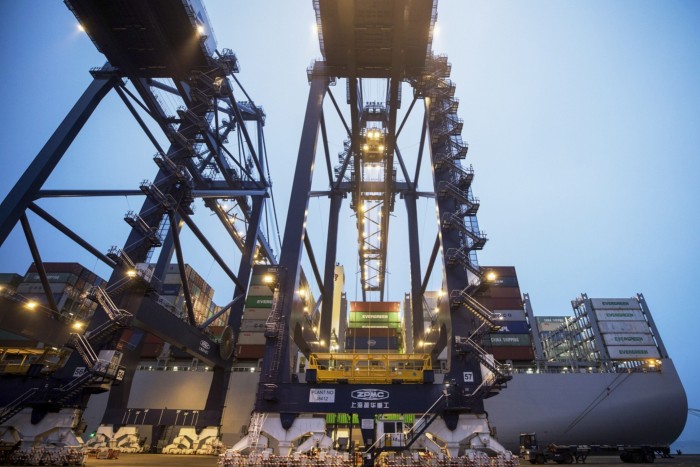[ad_1]
Companies are expanding production outside of China to reduce the risk from rising geopolitical tensions, but the country’s dominance in world trade makes cutting it out of global supply chains impossible, one of the world’s largest container shipping groups has said.
“The scale [and] the weight of China means it is easy to overexaggerate the impact of ‘China plus one’,” said Michael Fitzgerald, deputy finance chief of Orient Overseas Container Line, a Hong Kong-headquartered group belonging to Chinese state-owned Cosco.
“It’s happening. It’s real,” he told the Financial Times this month, referring to the strategy of companies shifting or expanding production outside of China amid tensions between Beijing and Washington.
“But don’t forget the absolute scale of China is so huge that even if Vietnam is growing by a bigger number [and] if China’s growing by a smaller number, that’s still a huge proportion of the supply chain.”
Apple, Samsung, Sony and Adidas are among the multinational companies that have shifted manufacturing to south-east Asia from China over the past few years, while Siemens has also been scouting for investments in the region to reduce supply chain risks.
While Fitzgerald acknowledged that companies have made “adjustments” and shifted some production out of China due to lower labour costs and risk management, “it will be that kind of bit-by-bit, incremental shift. It’s not [that] everybody packs up and goes”.
“It’s just not possible,” he said. “How would you want to shift that much production?”

OOCL has, together with its parent company, about 11 per cent share of the global container shipping market, according to data from Alphaliner.
Fitzgerald’s comments come after the share of US container import volumes coming from China dropped 10 percentage points compared with a year ago to about 32 per cent, according to logistics technology group Descartes, while the share of imports from India and Thailand rose slightly to 5 and 4 per cent, respectively, over the same period.
OOCL said it was diversifying growth in its freight routes and expanding in south-east Asian countries including Vietnam. Its newest vessel — one of the world’s largest container ships — docked in Vietnam last month during its first Asia-Europe voyage, reflecting an adaptation to “where the trade flow is”, Fitzgerald said.
“We have been growing a lot in emerging markets — to Africa, to Latin America — in recent years. South-east Asia, obviously. So, yes, of course, we have that diversification approach,” he said. “But look, [US-China] is still a huge market . . . whether you are talking about all sorts of different products.”
The company said it had a record year in 2022, with revenue rising 18 per cent from the previous year to $19.8bn, even as soaring freight rates under the pandemic’s global supply chain disruptions began to normalise.
Fitzgerald forecast a “mixed” outlook for this year as shipping giants such as Maersk have warned of an “abrupt end” to the container shipping boom. OOCL reported a 58 per cent drop in first-quarter revenue this year compared with last year to $2.2bn.
Earnings this year “will not be anything like it was in the last couple of years”, he said, but the company has reduced debt and is in a stronger net cash position.
OOCL’s direct parent company, the $14bn investment holding group Orient Overseas (International), was acquired by Cosco in 2018. Combined with Cosco, one of China’s biggest shipping conglomerates, the group is the world’s fourth-largest player, according to Alphaliner.
Additional reporting by Oliver Telling in London
[ad_2]
Source link
